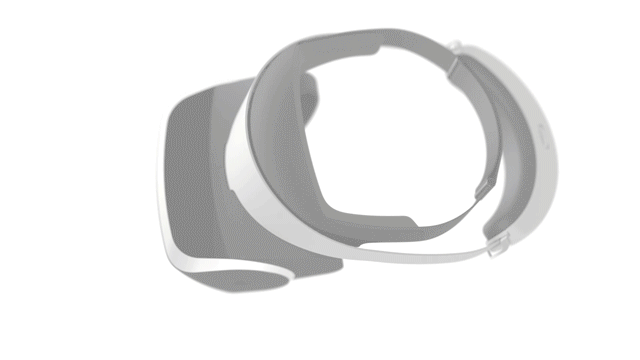How do you know this? You've pulled it out of thin air as much as you're claiming the rep did.
As I said on another related thread, perhaps for some users being completely enclosed isn't a comfortable or enjoyable experience? Sony want this to be a mass market proposition, so they will need to cater for a wide range of tastes and needs. The most logical thing would be to sell the unit with some kind of adjustable mask that allowed users to select how much they want to cut the world out, which would also allow people to increase the level of immersion as they felt better about it - maybe even for some kinds of game too.
The exact quote of the "design choice" to allow visibility out of the headset to accommodate those uncomfortable with being completely cut off from the real world, is in this thread. If it's true that Sony has presence as its "highest priority" for their HMD then that "desing choice" argument has to be false (and I assume just from someone that doesn't have the right answer, the same as the guy in the "tested" video claiming the HMD has "2 1080p panels", when sony explicitly stated there is only one)
It contradicts presence and the entire principle of believing you are in a different reality. If you can see outside of it, you are taken out of that reality. It's conflicting information to what your brain expects to understand the reality you are in, and it is impossible to be present in both at the same time.
This is well described by Abrash and many others. Removing the headset itself and leaving virtual reality to find yourself back in real world again is significantly disorienting precisely because of this distinction and the adjustments your mind has to make following the transition. There are already plenty of videos and presentations on this. VR operates on the same low level processing and vestibular systems that our minds do to perceive reality. Deviating from that is produces a mismatch between systems and is what causes disorientation and sickness.
It's why VR games can't force the camera around or turn you upside down because VR does not currently interact with the inner ear vestibular activity involved in processes that govern our perception of acceleration and rotation (gravity) - so far that is only manipulatable via galvanic vestibular stimulation at the mastoid processes (something that is likely dangerous in the long term and a long way from being consumer friendly)
I mentioned all this because Sony claim that presence is their highest priority for their headset. Taking short cuts, will make it difficult to use the headset for long periods without being disoriented of sick.
TO CLARIFY: I am not saying the assumption of a person being uncomfortable with being cut off from the real world is false, in fact it is probably true. However achieving presence is antithetical to being able to then see outside the virtual reality.
Eh, idk why you claim it's made up when it makes absolutely perfect sense. To the the degree that I'm wondering now what oculus' response will be to these challenges.
I think I articulated it well enough here:
There's levels of immersion and not everybody actually wants there vision cut all the way off while they dance around a virtual play area. All one need do is read the horror stories of eyetoy/wii/kinect/move etc and see that motion controlled gaming can lead to injury and damage even with full vision available, it of course would be several orders worse being completely blind to the real world.
I forget which article said it but the inclination is that Morpheus is meant to be used standing up and moving around swinging the Move versus Oculus' approach. Thats a valid concern.
Of course this is a concern, and it is why the standing, walking around VR experience is not solved yet. I'm certain Morpheus will be great for standing experiences, moving on the other hand (with the exception of being confined to a small square are - absolutely not. A successful translational movement tracking system has yet to be demonstrated with the exception of Valve's which is still hardly a realistic solution as it demands a dedicated room plastered with additional data points for cameras to determine your position.
The new PS camera is great for a small confined area but it is extremely limited in understand where you can go. An example would be turning and then having your controller light bar or move light obscured by your body. This will cause issues but Sony may determine a solution.
I think a distinction needs to be made from immersion and presence. Immersion is possible today with a nice big screen and great game experience, presence is the belief of being somewhere else while knowing that you are still in the same old room. That sensation requires being cut off from the real world entirely. As soon as you notice otherwise, you will be disoriented. The degree and frequency of this disorientation, I have no idea, but it could very well be like DK1 which is very difficult to use for extended periods


